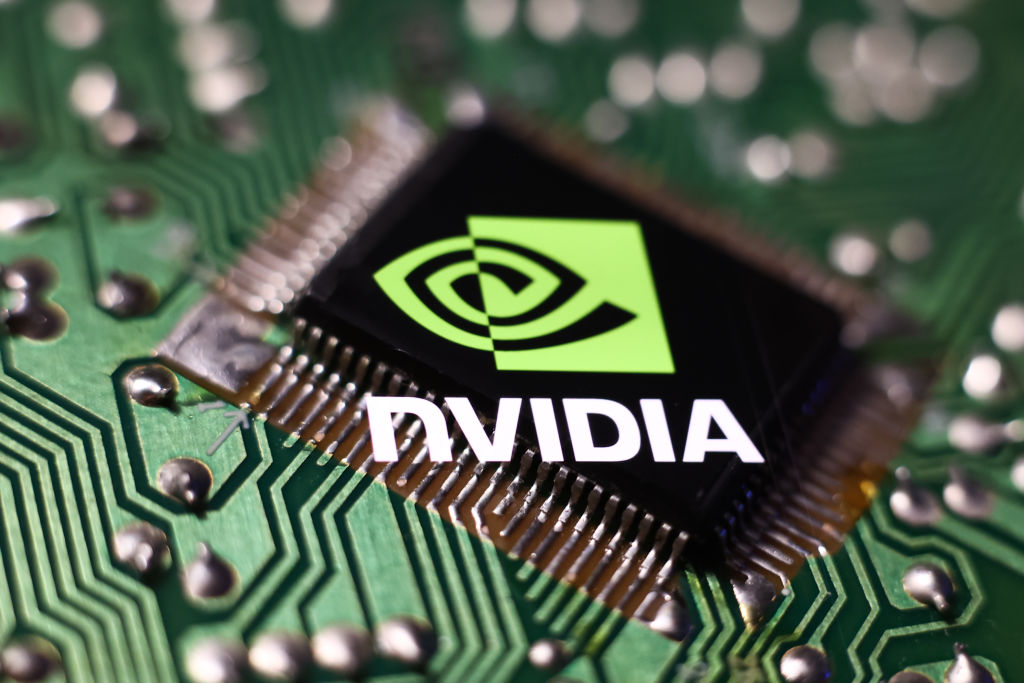
Nvidia (NVDA) earnings have become a marquee event on Wall Street. Investors got their chance to see the chipmaker's latest numbers when it disclosed its fiscal second-quarter results after Wednesday's close.
There's little doubt as to why the market is so hyper-focused on Nvidia earnings. The company's jaw-dropping results in May 2023 – where the chipmaker forecast quarterly revenue 50% above what Wall Street analysts were calling for at the time – lit a fire under investors' appetites for all things artificial intelligence (AI).
The sizzling growth has continued over the past year or so – and has cemented Nvidia's place as investors' most in-demand AI stock. It has also transformed NVDA into one of Wall Street's most valuable companies.
Indeed, since that fateful earnings event back in May 2023, Nvidia has seen its market value soar to $2.89 trillion through the August 28 close from $754.3 billion. In 2024 alone, the stock's market cap has swelled by nearly $2 trillion ($1.67 trillion, to be exact).
NVDA's rapid rise – along with several other mega-cap tech and tech-adjacent stocks dubbed the Magnificent 7 – is largely credited with fueling the broader stock market's surge. It also helped send the S&P 500 from a bear market to a bull market.
But Wall Street veterans already know that NVDA has long been one of the top buy-and-hold investments. Not only has Nvidia been one of the best stocks of the past 30 years, but a $1,000 stake 20 years ago would be worth roughly $800,000 today.
More recently, NVDA pulled back sharply during this summer's broad-market selloff. Several catalysts sparked the drop, including a collapse of the carry trade in Japan. Profit-taking also contributed to the selloff.
Nvidia quickly rebounded, but is once again heading lower after earnings.
How much did Nvidia beat earnings by?
Nvidia stock was down as much as 10% in Wednesday's after-hours session, but pared the these losses to 6.4% by Thursday's close. The pullback comes even though the chipmaker continued its long history of beating analysts' earnings and revenue expectations.
For the three months ended July 28, earnings jumped to 68 cents per share from 25 cents in the year-ago period. Revenue surged to a record $30 billion from the $13.5 billion it reported this time last year.
Analysts, on average, expected Nvidia to report earnings of 64 cents per share on revenue of $28.7 billion.
Helping boost the results was a strong surge in data center revenue – which tracks sales of the company's coveted generative AI chips – up 154% year-over-year to a record $26.3 billion.
The report also showed that Nvidia returned $15.4 billion to shareholders in the first half of the year through stock buybacks and dividends and its board of directors approved another $50 billion in share repurchases.
"Here's the issue, the size of the beat this time was much smaller than we've been seeing," says Ryan Detrick, chief market strategist at Carson Group. "Even future guidance was raised, but again not by the tune from previous quarters. This is a great company that is still growing revenue at 122%, but it appears the bar was just set a tad too high this earnings season."
Is Nvidia stock still worth buying?
Even with Nvidia's post-earnings decline, it has been one of the best stocks to buy this year – up about 140% through Thursday's close. And Wall Street is firmly in the chipmaker's bull camp.
Of the 60 analysts covering the stock tracked by S&P Global Market Intelligence, 44 say it's a Strong Buy, 12 have it at Buy and four call it a Hold. This works out to a consensus Strong Buy recommendation, making NVDA one of analysts' top-rated S&P 500 stocks.
Stifel analyst Ruben Roy is one of those with a Buy rating on the semiconductor stock. "We believe that NVDA is well-positioned in markets that combine to yield an overall total addressable market of more than $100 billion exiting 2025 and a longer-term opportunity funnel that could approach $1 trillion," Roy says.
While the analyst is upbeat about Nvidia's exposure to the gaming and automotive industries, he notes that "the shift from general purpose compute to accelerated compute represents the company’s most significant revenue and profitability growth opportunity over the next several years."
The chipmaker's "post-earnings pullback was largely driven by investor confusion and a fear that Nvidia's stock has run too fast since the early August low, but the strength in Nvidia's quarter showed that its valuation is justified and that the stock has more room to run," says James Demmert, chief investment officer at Main Street Research. "The pullback in Nvidia's stock is an invitation for investors to buy the stock."
Over at BofA Securities, analyst Vivek Arya shares this buy-the-dip mentality. The analyst says Nvidia is a top sector pick and sees "any selloff as [an] enhanced buying opportunity as challenges are not in demand, but in (solvable) supply that will not fundamentally derail NVDA's longer-term momentum."
Arya is referring to concerns surrounding a potential hold-up of the company's new Blackwell AI chips, but management indicated in the earnings call that production is set to ramp up in the fourth quarter and that demand for the chip is high.
Looking elsewhere on Wall Street, CFRA Research analyst Angelo Zino maintained a Buy rating on NVDA after earnings. While NVDA's guidance hints at a slowdown in revenue growth, he remains upbeat about higher capital expenditures spending from hyperscalers," as well as "NVDA's ability to continue to take wallet share across the data center space as Blackwell is set to become a more platform-based offering."
Ultimately, whether or not you choose to buy Nvidia stock before or after earnings should be based on your personal investing goals. However, Wall Street is fully behind NVDA and is upbeat about its long-term growth potential.







